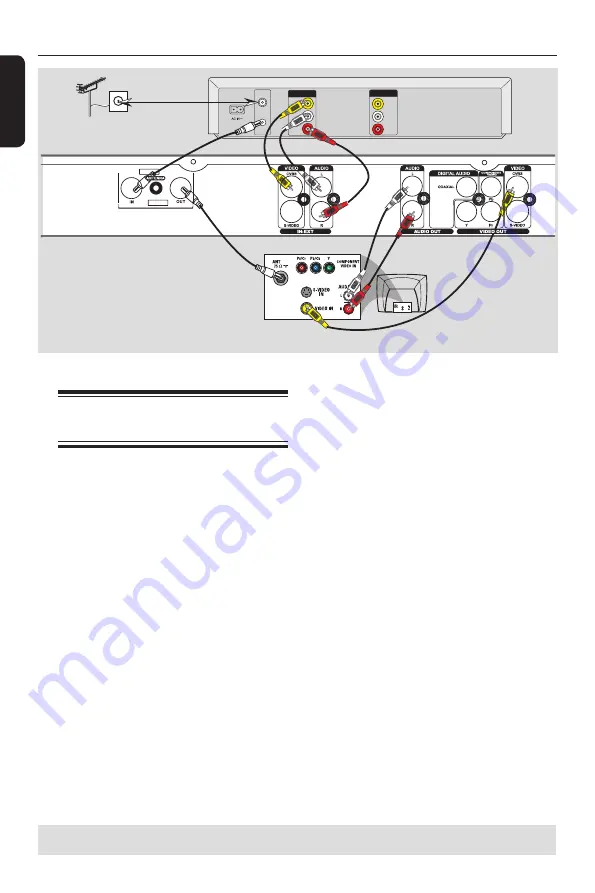
E
n
g
lis
h
14
Optional Connections
(continued)
VIDEO
IN
晻
晻
AUDIO
L
AUDIO
R
VIDEO
OUT
AUDIO
L
AUDIO
R
VHF/UHF
RF IN
VHF/UHF
RF OUT
AU D IO
O U T
S-V ID E O
IN
V ID E O IN
TV
A
B
C
Back of a VCR
(Example only)
D
Connecting to a VCR or
other similar device
This connection enables you to record
from video tape to a DVD±R/±RW and
allows the VCR to be used for playback if
the DVD recorder is turned off.
A
Connect the Antenna/Cable TV signal to
the antenna input (RF IN) jack on the
VCR, then connect the antenna
output(RF out) jack on the VCR to the
ANTENNA IN
jack on the DVD
recorder.
B
Use the supplied RF coaxial cable to
connect the
ANTENNA OUT
jack on
the DVD recorder to the antenna input
jack on the TV.
C
Use the audio/video cables to connect
the
VIDEO/AUDIO IN-EXT
on the
DVD recorder to the matching VIDEO/
AUDIO output jacks on the VCR.
D
Use the audio/video cables to connect
the
VIDEO/AUDIO OUT
on the DVD
recorder to the matching VIDEO/AUDIO
input jacks on the TV.
Helpful Hints:
– You may use the S-VIDEO (Y/C) jack
instead of VIDEO (CVBS) jack if the
connected device has the same S-VIDEO
input/output jack. This video connection
provides better picture quality.
– Most commercial video cassettes and
DVDs are copy-protected and therefore
cannot be recorded.
– Connect the DVD recorder directly to the
TV. If there is a VCR or an additional device
in between, the picture quality may be poor
because of the copy protection system built
into the DVD recorder.
Antenna/
cable TV signals
TIPS:
Before making or changing any connections, make sure that all the devices are disconnected
from the power outlet.





























